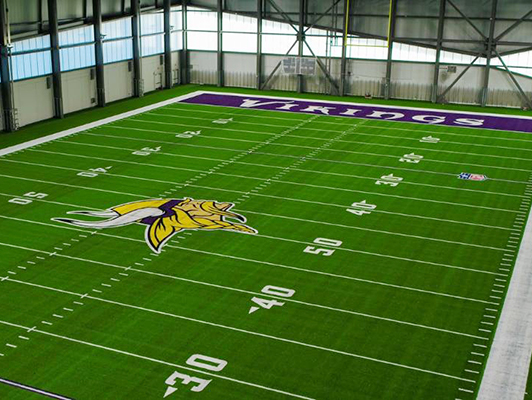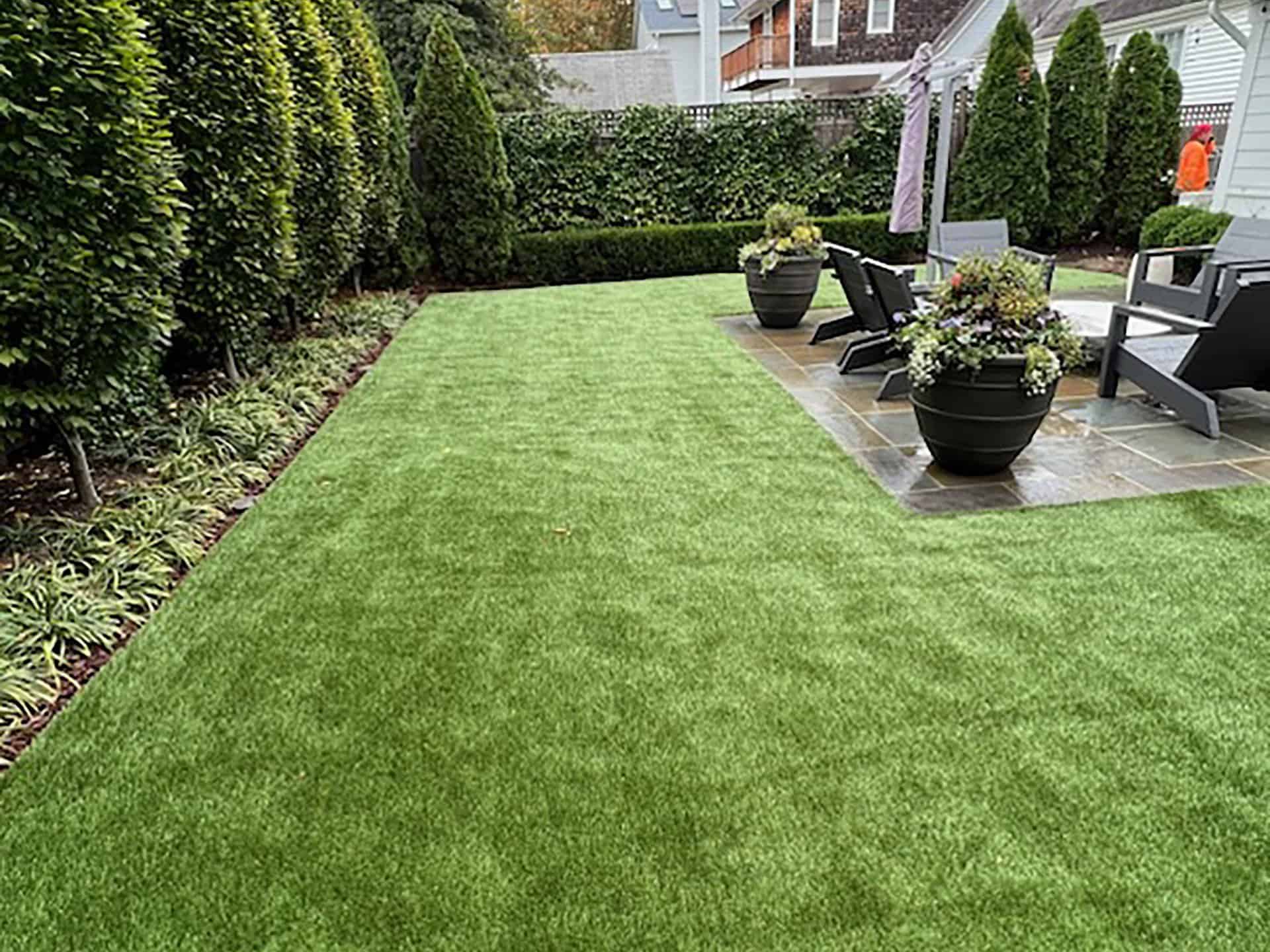Weather-Resistant Arizona Artificial Turf for Home and Business Applications
Weather-Resistant Arizona Artificial Turf for Home and Business Applications
Blog Article
Look Into the Environmental Benefits of Opting for Artificial Turf Solutions
The adoption of artificial grass options offers a compelling chance to deal with pushing ecological challenges. By substantially lowering water use and decreasing the application of hazardous chemicals, these choices not only advertise sustainable landscape design yet additionally safeguard local ecosystems.
Water Preservation Advantages
One of the most significant benefits of synthetic grass is its capability to preserve water. Typical lawn yards require significant watering, especially in locations vulnerable to dry spell or water restrictions. On the other hand, man-made turf does not need watering, substantially minimizing the overall demand for water resources. This feature is particularly advantageous in deserts where water deficiency is a pushing concern.
By getting rid of the demand for routine watering, synthetic grass adds to sustainable landscape practices and aids mitigate the ecological influence of extreme water usage. In addition, the preservation of water includes the decrease of runoff, which can lead to dirt erosion and waterway air pollution.
In addition, the installment of synthetic grass enables communities and property owners to allot water resources a lot more effectively, concentrating on essential usages such as alcohol consumption water and farming. The change in the direction of fabricated turf not only advertises accountable water use yet likewise aligns with broader ecological objectives targeted at preserving natural deposits.
As areas progressively prioritize sustainability, the water conservation benefits of synthetic grass offer an engaging case for its adoption in business and residential landscaping jobs.
Reduced Chemical Usage
The transition to artificial turf significantly lowers the reliance on chemical therapies frequently made use of in all-natural turf upkeep. Typical lawn management generally entails the application of fertilizers, herbicides, and pesticides to promote growth and control pests. These chemicals can present threats to human health, neighborhood wild animals, and the setting, adding to dirt and water contamination.
In contrast, man-made lawn eliminates the demand for these hazardous compounds. By decreasing the release of artificial substances right into the environment, man-made turf promotes healthier dirt and water systems.
Moreover, the absence of chemical overflow associated with fabricated lawn setups helps protect neighborhood rivers from air pollution, supporting water life and preserving biodiversity. Phoenix turf companies. As areas progressively prioritize lasting methods, choosing artificial lawn provides a sensible solution that straightens with environmental preservation goals. With this shift, property proprietors can delight in lavish green rooms without jeopardizing ecological wellness, leading the way for a much more sustainable future
Lower Carbon Footprint

Additionally, the setup of artificial turf can result in significant water preservation. All-natural yards call for substantial amounts of water for irrigation, which not just includes in the carbon impact related to water extraction and therapy yet also pressures neighborhood water resources. On the other hand, man-made lawn Full Article needs minimal upkeep, needing no watering, thereby substantially decreasing water usage and its connected energy prices.
Furthermore, the durability of synthetic grass contributes to its reduced carbon impact. With a lifespan of up to 15 years or more, the need for frequent substitutes is lessened, causing less waste and reduced energy intake in manufacturing and throwing away traditional turf alternatives. In general, artificial lawn provides a sustainable alternative for environmentally conscious landscape design.
Habitat Preservation
Habitat preservation is a vital consideration in the dispute over landscape design selections, especially when comparing synthetic turf to all-natural turf. Natural grass lawns frequently require comprehensive maintenance, including making use of pesticides, fertilizers, and herbicides, which find more information can negatively affect regional environments. These chemicals can seep right into the soil and waterways, harming native vegetation and fauna and disrupting regional environments.
In comparison, synthetic grass provides an opportunity to decrease the environmental footprint of landscaping. By choosing synthetic yard, home owners can lessen the disturbance of natural environments connected with conventional yard care practices. Synthetic grass removes the requirement for dangerous chemicals, therefore shielding neighboring wild animals and keeping the integrity of surrounding environments. The installment of man-made lawn can lead to the conversion of previous yard areas into even more biodiverse landscapes, such as pollinator gardens or native plant areas, which can support local wildlife.
Ultimately, the shift to fabricated turf not just saves water and decreases maintenance initiatives but additionally cultivates an extra unified connection in between human activities and the native environment, advertising habitat conservation in the procedure.
Long-Term Sustainability
Lasting sustainability is an essential aspect in assessing the benefits of artificial lawn over traditional grass yards. Among one of the most significant advantages of synthetic grass is its toughness; it can last as much as 15-20 years with very little upkeep, whereas all-natural turf calls for constant reseeding and substitute. This longevity minimizes the demand for constant sources, such as water, fertilizers, and chemicals, which are crucial for maintaining a healthy grass yard.
In addition, man-made grass adds to a decrease in carbon exhausts associated with yard treatment devices. Traditional lawns usually need gas-powered lawn mowers, trimmers, and blowers, every one of which add to air contamination. Artificial turf companies phoenix. In contrast, synthetic grass eliminates the demand for such equipment, advertising a cleaner setting
Additionally, the production of synthetic grass significantly uses recycled products, enhancing its sustainability account. As makers adopt environmentally friendly practices, the environmental footprint of synthetic grass continues to reduce.

Conclusion
The adoption of synthetic try this website turf remedies presents considerable ecological benefits, consisting of considerable water conservation, minimized dependence on damaging chemicals, and a lower carbon footprint. Man-made lawn aids in maintaining all-natural habitats by decreasing land disturbance and advertising lasting sustainability through the use of resilient products. Jointly, these elements highlight the possibility of artificial grass to add positively to ecological wellness and use a practical option to typical landscaping methods in an increasingly resource-conscious globe.
In contrast, man-made grass does not require watering, considerably lowering the total need for water sources. By minimizing the release of synthetic substances into the ecosystem, man-made turf promotes much healthier soil and water systems.
Furthermore, the installment of artificial grass can result in considerable water preservation. In contrast, synthetic turf requires very little maintenance, calling for no watering, thereby substantially minimizing water use and its connected power costs.

Report this page